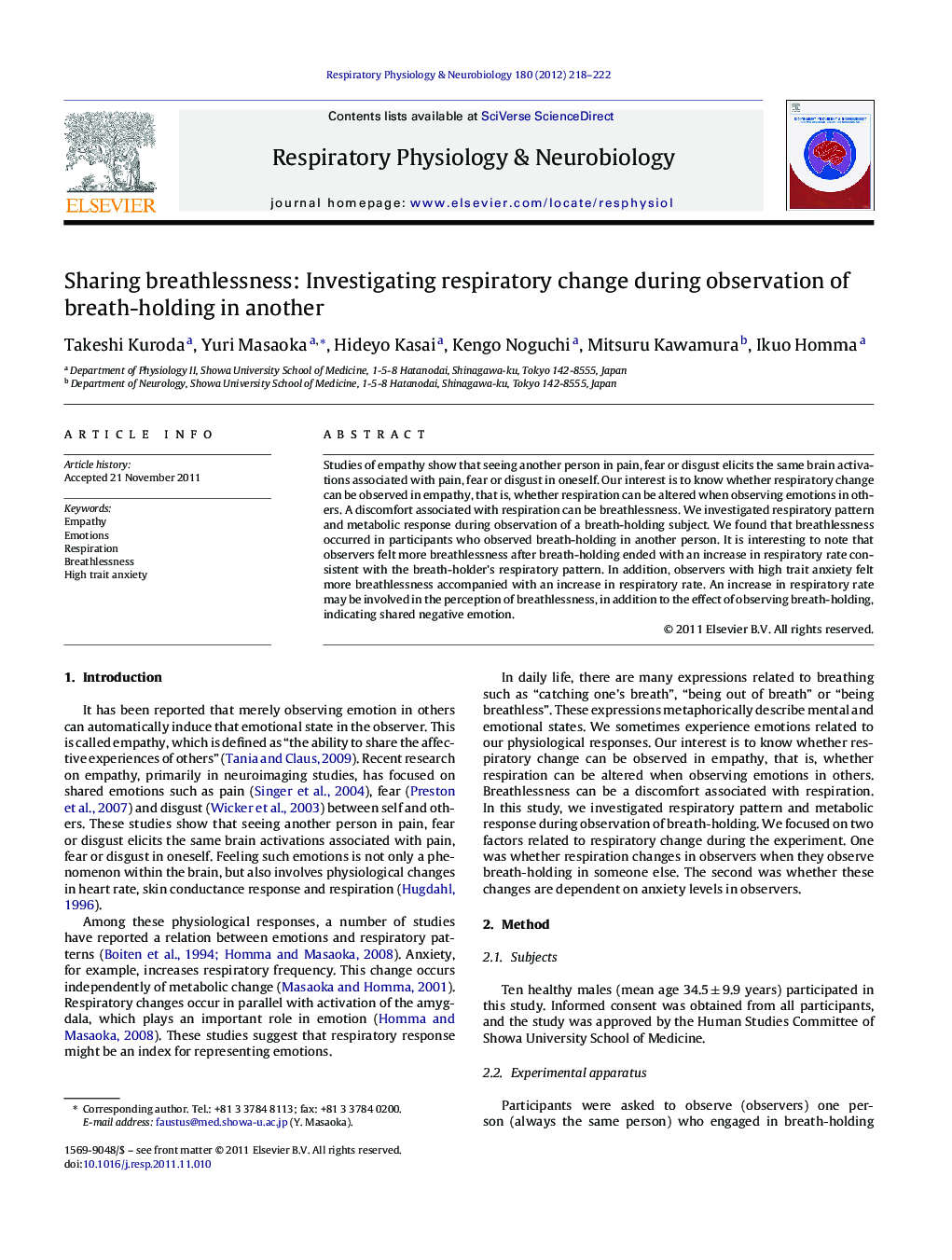| Article ID | Journal | Published Year | Pages | File Type |
|---|---|---|---|---|
| 5926328 | Respiratory Physiology & Neurobiology | 2012 | 5 Pages |
Studies of empathy show that seeing another person in pain, fear or disgust elicits the same brain activations associated with pain, fear or disgust in oneself. Our interest is to know whether respiratory change can be observed in empathy, that is, whether respiration can be altered when observing emotions in others. A discomfort associated with respiration can be breathlessness. We investigated respiratory pattern and metabolic response during observation of a breath-holding subject. We found that breathlessness occurred in participants who observed breath-holding in another person. It is interesting to note that observers felt more breathlessness after breath-holding ended with an increase in respiratory rate consistent with the breath-holder's respiratory pattern. In addition, observers with high trait anxiety felt more breathlessness accompanied with an increase in respiratory rate. An increase in respiratory rate may be involved in the perception of breathlessness, in addition to the effect of observing breath-holding, indicating shared negative emotion.
⺠Breathlessness occurred in participants who observed breath-holding in another person. ⺠Participants felt breathlessness with increase of respiratory rate. ⺠High trait anxiety participants felt more breathlessness with an increase in respiratory rate.
